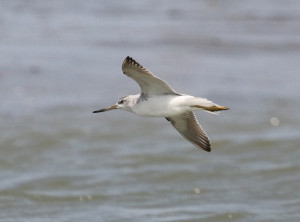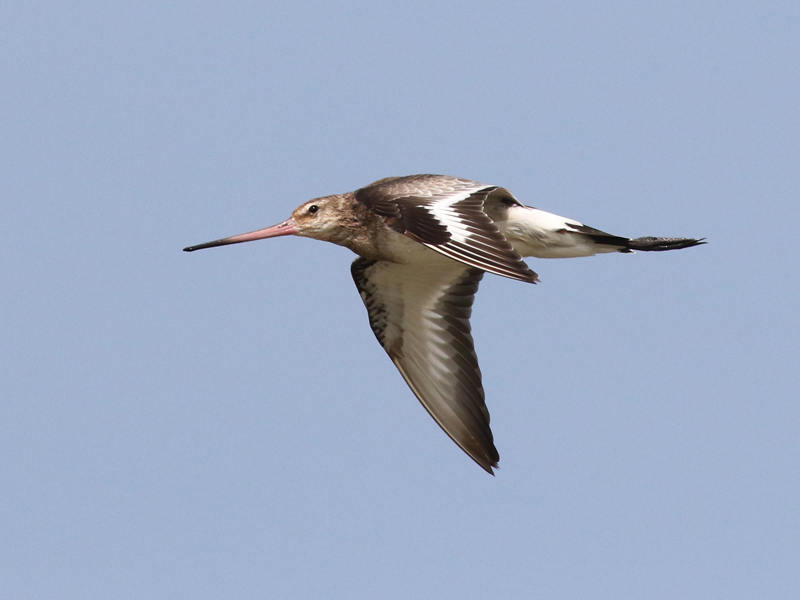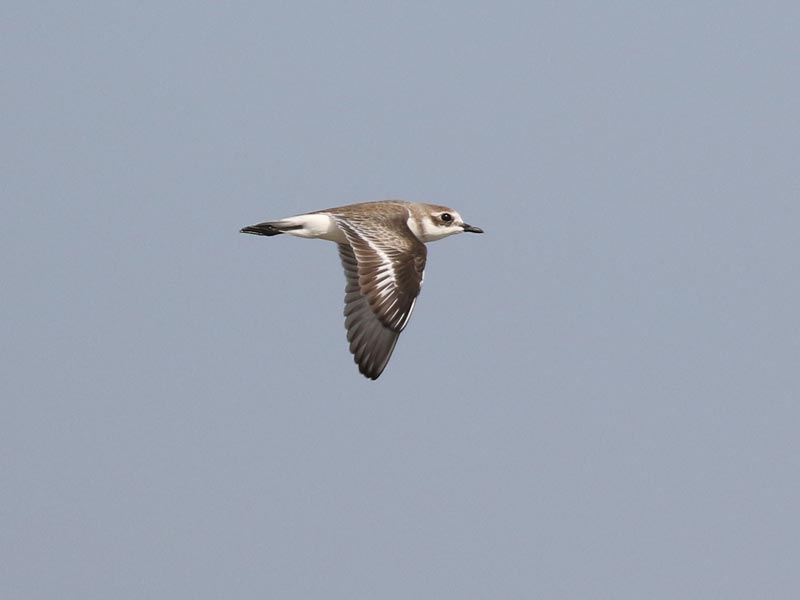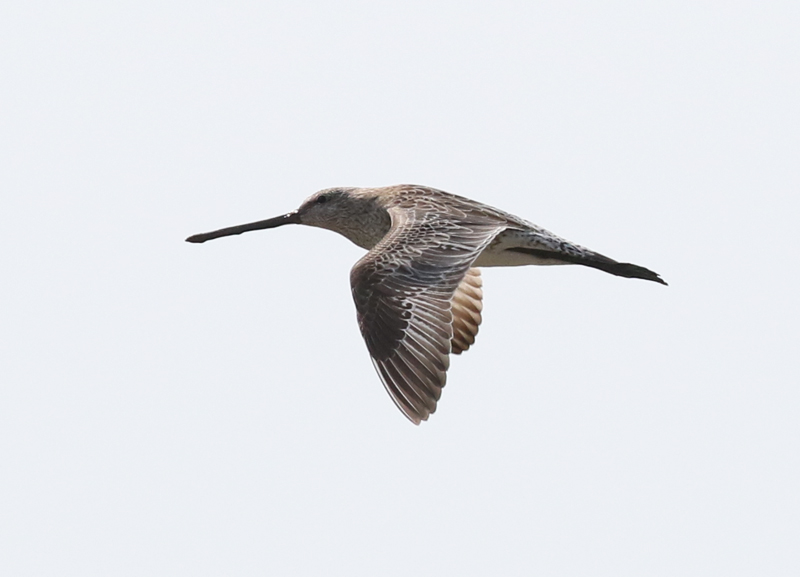
Wading birds (shorebirds to some) are group much-beloved by some birders but equally they often elicite a response of “I don’t do shorebirds” from others. I have accompanied birders with both attitudes to the Gulf of Thailand, which is undoubtedly one of the best locations in the world to observe waders. Those who love wading birds are always in their element here, admiring the large number of birds and huge variety of species while the excellent views allow others to learn a lot of about the identification of this tricky group of birds. While I enjoy watching them on the ground over the last few years I have really enjoyed getting photos of these birds in flight. Not only do flight shots show shorebirds at their most graceful, these types of photos also allow us to see details that are otherwise hidden to us. Below are a selection of flight shots of shorebirds from the Gulf of Thailand, taken over the last six months.
One of the few species of wader that is resident in the Gulf of Thailand is Black-winged Stilt. This is one of the commonest and easy to recognize of all shorebirds although some people do get a little confused by the immature birds. Getting nice photos of black and white birds in Thailand’s intense light is not easy so I was happy with this one.
One of the commonest migratory shorebirds in this area is the tiny Red-necked Stint. I have sometimes been asked why they do not have red necks and of course the answer is because they are in non-breeding plumage. They start to come into their breeding colours towards the end of March when they begin to look really smart. This one has some colour leg flags, black over green.
I have spent a lot of time photographing Black-tailed Godwits back home in UK and always find them a very photogenic bird in flight. The birds in Thailand are of the melanuroides subspecies which some authorities have treid to split as Eastern Black-tailed Godwit, something that I think is stretching a point. Large flocks of this species congregate in the Gulf of Thailand and they are often quite approachable, making them a good photographic subject.
Pacific Golden Plover is a very elegant bird and when they come into breeding plumage they are very golden indeed. This one below is in winter plumage but I was happy to get this photo as I saw this bird out of the corner of my eye and took a couple of hopeful shots.
Common Greenshank is a bird that has a wide range across Eurasia but never seems to be especially numerous anywhere. In the Gulf of Thailand it is a fairly common bird but it is rare to see large congregations of them. I was photographing this one feeding in a salt pan when it suddenly took off leaving me with a nice series of photos.
Red-wattled Lapwing is another of the few waders that actually breed in Thailand. It is a very common bird, preferring dry open areas and damp fields. Some birders have said to me that the noisy call of this species makes it the first bird you get over-familar with in Thailand. Even though many birders who have been in this region a long time may overlook Red-wattled Lapwing it is, in truth, a smart bird.
In Europe Curlew Sandpiper is a treasured passage migrant but in Thailand it is a common winter visitor. When they start arriving in August and September some of them are still in partial breeding plumage and they also come into full colour just before they leave in April. A small number of Curlew Sandpipers can be found in full, rusty breeding condition in the middle of winter and if you spot one it really lights up among all the greyer birds. This small group are all in non-breeding plumage.
Great Knot is the largest of calidris to be seen in Thailand. This vulnerable species is seen in the Gulf of Thailand in ever-increasing numbers which might sound encouraging but raises its own conservation concerns. You can read more about this here - Steep upward trajectory in Great Knot numbers at sites in South-East Asia. Back in November 2019 I saw massive numbers of Great Knot arriving from migration and took a lot of flight photos.
Lesser Sand Plover is a very common visitor to the Gulf of Thailand and large flocks are a frequent sight. Quite frankly in non-breeding plumage they are not the most exciting of birds and can cause a real identification problem for many birders new to shorebirds. However, as this shot shows, when they are in flight their wing markings suddenly reveal details that cannot be seen when they are settled. When this species reaches breeding plumage it is a really smart bird indeed.
Asian Dowitcher is one of the most highly sought-after species of wader in Thailand. I am a real fan of this bird due to its distinctive bill which is thick and black and easily spotted in the field. Recently I was at a site on the Gulf of Thailand where good numbers of these birds were heading onto the mud flats that were beginning to be exposed by the retreating tide. Standing out on a small pier I was able to get some flight photos of a small group of Asian Dowitchers although the light was very intense and hard to deal with.
Another much-wanted wader in the Gulf of Thailand is Nordmann’s Greenshank. Small flocks are regular at several locations but are often hard to get close to. Back in December 2019 I was lucky enough to get close to one while taking a boat trip with this bird flying across the river from one patch of mud to the other. This photo shows the distinctive bill pattern and yellow legs that separate it from Common Greenshank.
One of my favourite books on this group of birds is the aptly-titled Shorebirds. Although this book was published some time ago it is still an excellent guide to this difficult group of birds. There are some really cheap second-hand ones for sale online, take a look here – Shorebirds: An Identification Guide to the Waders of the World by Hayman, Marchant & Prater.


 April 30th, 2020
April 30th, 2020  Nick
Nick 










 Posted in
Posted in  Tags:
Tags: 










